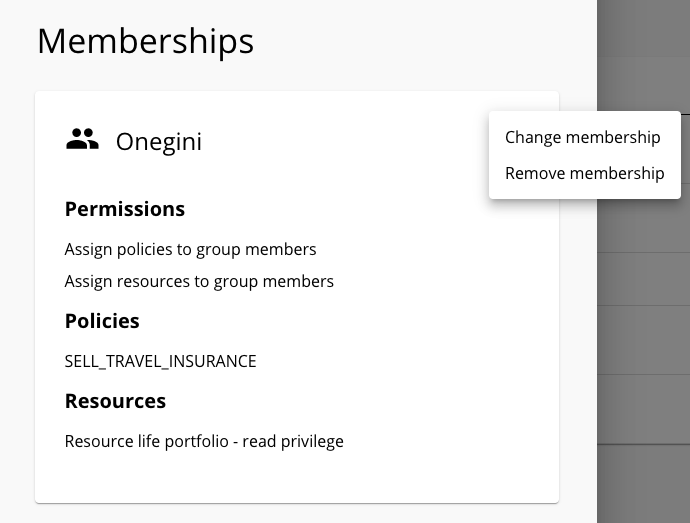In-depth view on permissions
Permissions represent the rights/privileges a person has in the DABP and can be assigned to a person. Permissions are strictly linked to the DABP system and are not exposed outside of DABP, and have no meaning for external systems.
In total, there are 9 permissions:
- Invite/remove group members enables the user to add, edit, and delete members of the group, and its subgroups.
- Assign permissions to group members enables the user to add, edit, and delete permissions of group members.
- Assign policies to group members enables the user to add, edit, and delete policies of group members.
- Assign resources to group members enables the user to add, edit, and delete resources of group members.
- Add/edit/delete groups enables the user to add, edit, and delete subgroups
- Assign policies to groups enables the user to add, edit, and delete policies on a group level.
- Assign resources to groups enables the user to add, edit, and delete resources on a group level.
- Add/edit/delete policies enables the user to add, edit, and delete policies to the system.
- Add/edit/delete resources enables the user to add, edit, and delete resources and resource types to the system. This permission can be assigned only to members of the root group.
If a person has any permissions for any (sub)group, we refer to that user as a superuser. If a person has all permissions on the root level, we refer to that user as an administrator.
Permission inheritance
Permissions are inherited within groups.
This means that if a user was invited to DABP to join group A with any permissions then they will also have
those permissions for every subgroup of group A.
Managing permissions of other users
A user that has the Invite/remove group members permission can add and remove users from that group.
A user that has the Assign permissions to group members permission can assign permissions to a person.
When inviting a person you can select what permissions they will have in the group.
The most important rule is that you cannot grant permissions that you don't have yourself
For example:
- User A has all permissions
- User B has permissions
Invite/remove group membersandAssign permissions to group members - They both are members of the same group.
- User B cannot remove
Manage group,Manage person policies,Manage group policies, orManage policiespermission from User A. - User B can remove
Manage group membersandManage permissionsfrom User A. - User B can invite a new user to their group, but can only assign
Manage group membersandManage permissionsor a subset when inviting them. - User A can invite a new user to their group and can assign all permissions or a subset.
To manage user permissions open the user details modal, click the vertical ellipsis and choose "Change membership". This will switch the modal to the edit mode where you will be able to change user permissions.

Click save to confirm your choices.